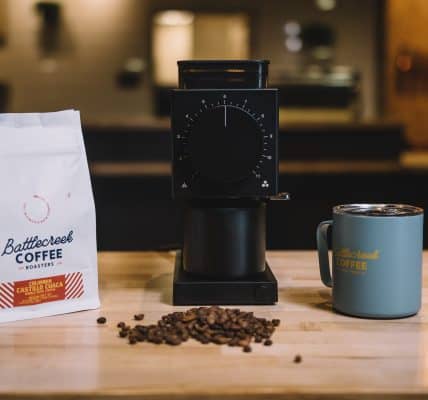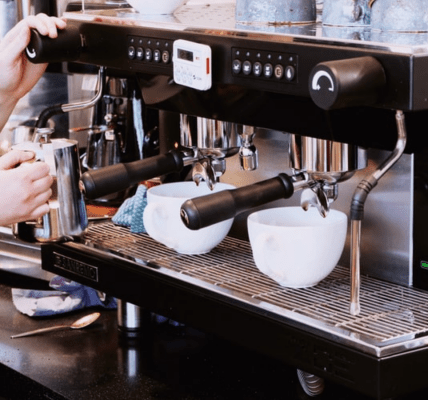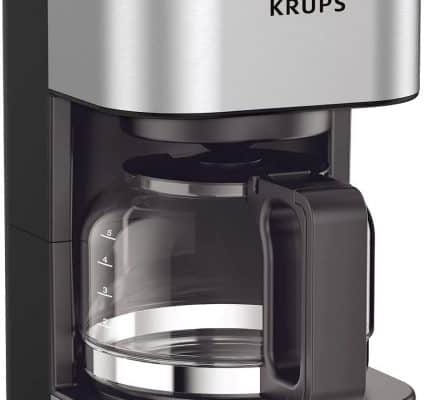
Drip or pour-over coffee has become the talk of the town. It’s awesome: milder and better mouthfeel, more uniform flavor, less acidic, and a more layered, complex flavor. Besides, it’s a healthier way of getting that morning punch. And that’s why filter coffee machines have also become a common household. Today we will be looking at precisely how filter coffee machines work. This may be the food for your curiosity or a useful insight to fix your filter coffee machine.
The Basics
Table of Contents
A filter coffee machine or drip coffee maker is a simple assortment. We know that a filter coffee machine uses coffee grounds on a filter and makes your coffee by letting hot, boiling water spray through them.
Taking the lid off, or by the simple look of it, you can appreciate the following simple components of a drip coffee maker:
A Reservoir
You are probably most familiar with this part of your drip coffee because we refill it quite often!
The Reservoir holds the cold water you insert into your filter coffee maker. You will also see a hole at the bottom of the Reservoir. Remember this hole, and we will come back to it later.
A Hot Water Tube
You see an insulated water tube emerging from the Reservoir, turning and ending at the faucet at the top. This tube carries the heated-up water to the drip area to be showered or sprayed over the coffee grounds.
A Showerhead with the Drip Area
The shower head or the faucet is the device that sprays boiling water onto the coffee grounds below so that you can have your filter coffee.
Below the showerhead, you can find the drip area. It is nothing but a plastic tray or plate with holes that control the amount of water passing through the coffee grounds.
The Working Machinery of Filter Coffee Machines
It’s time to take off the bottom lid and see what’s inside. After all, here’s where the active members of the family are located!
This is what you will find:
A Power Connection
The simplest and the most obvious component you will find is the power cord. This is what you plug into a source of electricity. The heating element uses electric energy to provide heat energy for the boiling up of your water.
Cold Water Tube
Remember the Hole at the bottom of the Reservoir? The cold-water tube at the bottom of the filter coffee machine connects the Reservoir and the hot water tube in the heating element.
Heating Element of Filter Coffee Machine
Here comes the one that does all the work!
The heating element gets the electrical power. It then uses it to heat the water for your drip coffee.
It has two components:
- A resistive heating element is simply a coiled wire. The coil is embedded in plaster for protection and longer life.
- An aluminum tube that carries the water through the heating element
A metal warming plate also lies just beneath the coffee pot. Once it gets hot, it cools down slowly and keeps the water hot for a considerable time. An efficient heating element and a high-quality metal warming plate are the secrets to the filter coffee machines that stay hot for long.
A One-way Valve
This one-way valve ensures that water flows in the right direction. So that the cold and the heated water don’t mix up, otherwise, there will be a huge wastage of energy every time heating the water separately.
Because without the one-way valve, water would have an equal tendency to flow back into the bucket and mix up with the cold water.
Sensors and Fuses
The bottom working machinery of a filter coffee machine also contains sensors and fuses in the heating element. The sensors detect when the resistive heating element is getting overheated.
The fuse burns out and drops the connection when there is too much wattage than the filter coffee machine can handle.
Working of the Heating Element in Filter Coffee Machines
The resistive heating element, a coil of metal wire, is located between the metal warming plate and the Aluminum heating tube.
To make things clear: The metal warming lies just beneath the coffee pot, lined with grease. And then comes the resistive heating element, which is in direct contact with the Aluminum heating tube. The aluminium heating tube carries the water from the cold-water tube, heats it, and hands it over to the hot water tube.
So, you see, when the resistive heating element is working, it is heating up the water in the Aluminum tube. And through the metal warming plate, it keeps the water in the coffee pot hot too.
How do Coffee Filter Machines work?
It’s time to join all the dots. We will take you through the coffee-making process bit by bit and see how exactly we get that perfect, hot cup of coffee in minutes.
- The journey starts when you fill the Reservoir of the drip coffee machine. The lid goes on, and the drip coffee machine is set to work.
- The water flows through the Hole into the cold-water tube.
- The one-way valve allows the water to flow into the Aluminum heating tube. This is a spontaneous process that occurs whether the coffee machine is plugged in or not.
- When you plug your filter coffee machine into an electricity source, the heating element starts to heat up.
- The water in the Aluminum heating tube in contact with the resistive heating element begins to heat up. This continues until the water starts to boil.
- When the water has formed enough bubbles to allow the hot water to rise the hot water tube. (Remember the insulated tube rising from the bottom of the machine ending in the faucet)
- The boiling water is then made to disperse through a faucet. Sometimes a plate with holes is also used. Dispersion of water is important so that it goes through the coffee grounds evenly.
As a result, caffeoyl, containing the essence and oils from the coffee, is released.
How to Get the Best from a Filter Coffee Machine?
Now that we know exactly how a filter coffee machine works and makes your drip coffee, you can better care for your filter coffee machine. There are certain checkpoints that can help increase the efficiency of your drip coffee machine:
1. The Hole at the bottom of the Reservoir
If your coffee machine is not working the way it is supposed to, check the Hole at the bottom of the Reservoir. It could be clogged. Clean it out and see the difference.
2. The one-way valve
The valve between the cold-water tube and the Aluminum heating tube can also clog. For that, you will have to open the base of the coffee machine. Don’t forget to unplug the coffee machine before you do that!
3. The Faucet
The water you are using may contain salts and minerals. For better and more efficient dispersion, the faucet has fine holes, and thus water impurities can deposit and clog the faucet. Make sure you clean that often too.
4. General cleaning out of the Filter Coffee Machines
You see that in the process of coffee brewing, the water is more or less spontaneously passing through the various pipelines of the machine. And the rest is done when you plug it in. You can use this knowledge in the internal cleaning of the device.
Let your machine run normally. Just add a cup of vinegar to the Reservoir. The vinegar in the water will thoroughly clean the machine in one round.
Conclusion
There you go with the detailed mechanism of working of a filter coffee machine. It’s a straightforward assortment. But understanding the machinery will help you debug minor issues with the filter coffee machine instead of buying a new one immediately.
Because we understand that a day without your drip coffee is a day you do not count! You can definitely fix a minor error in this simple machine but don’t forget to unplug your machine before you go for absolutely anything other than making coffee.



